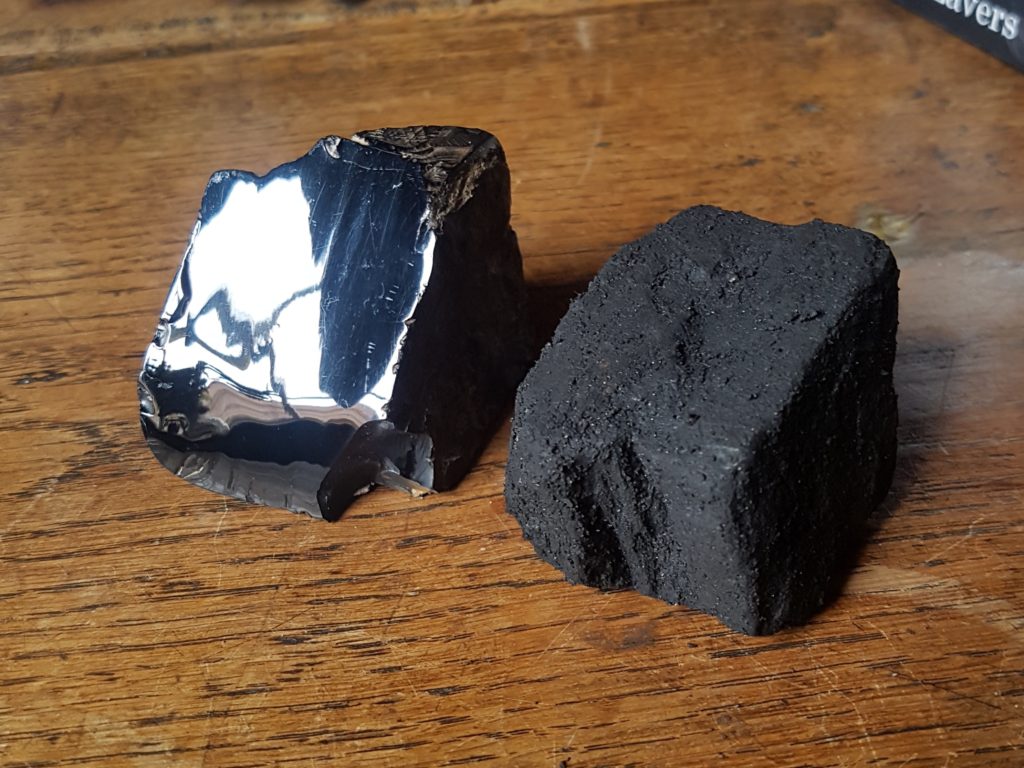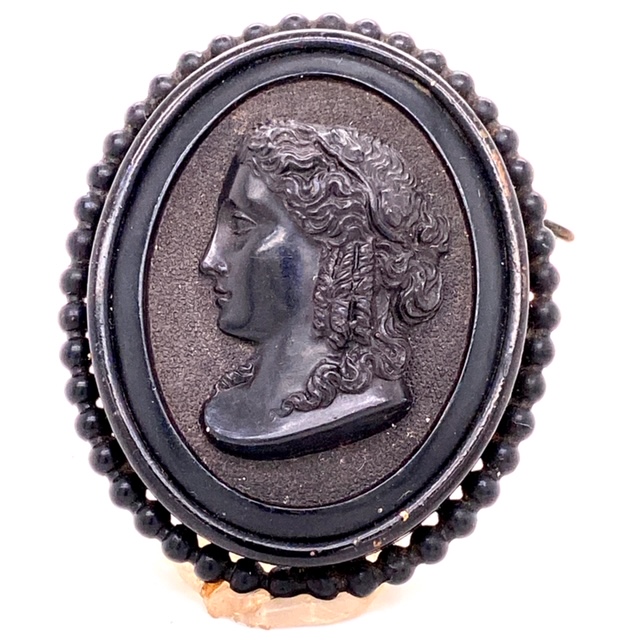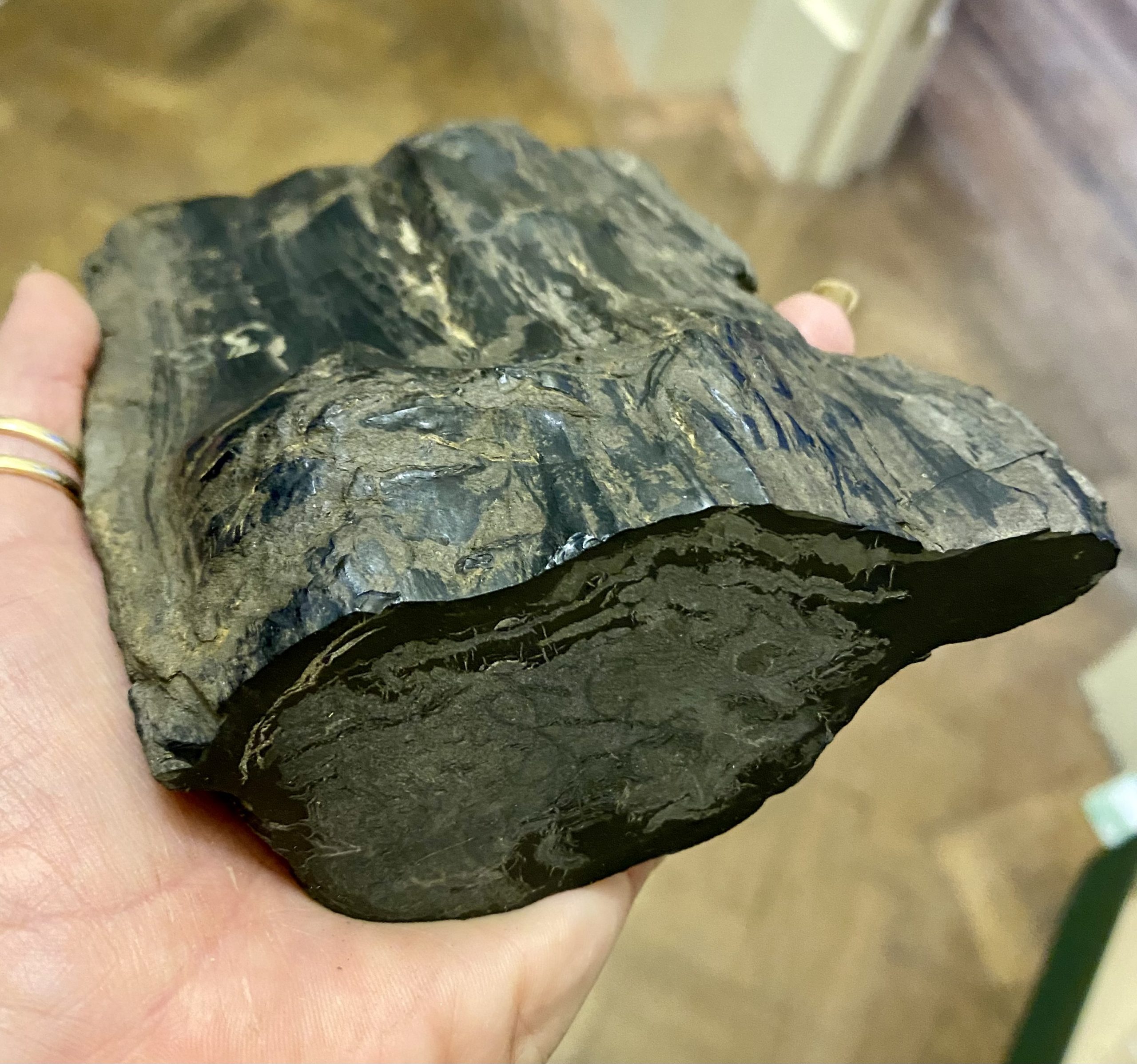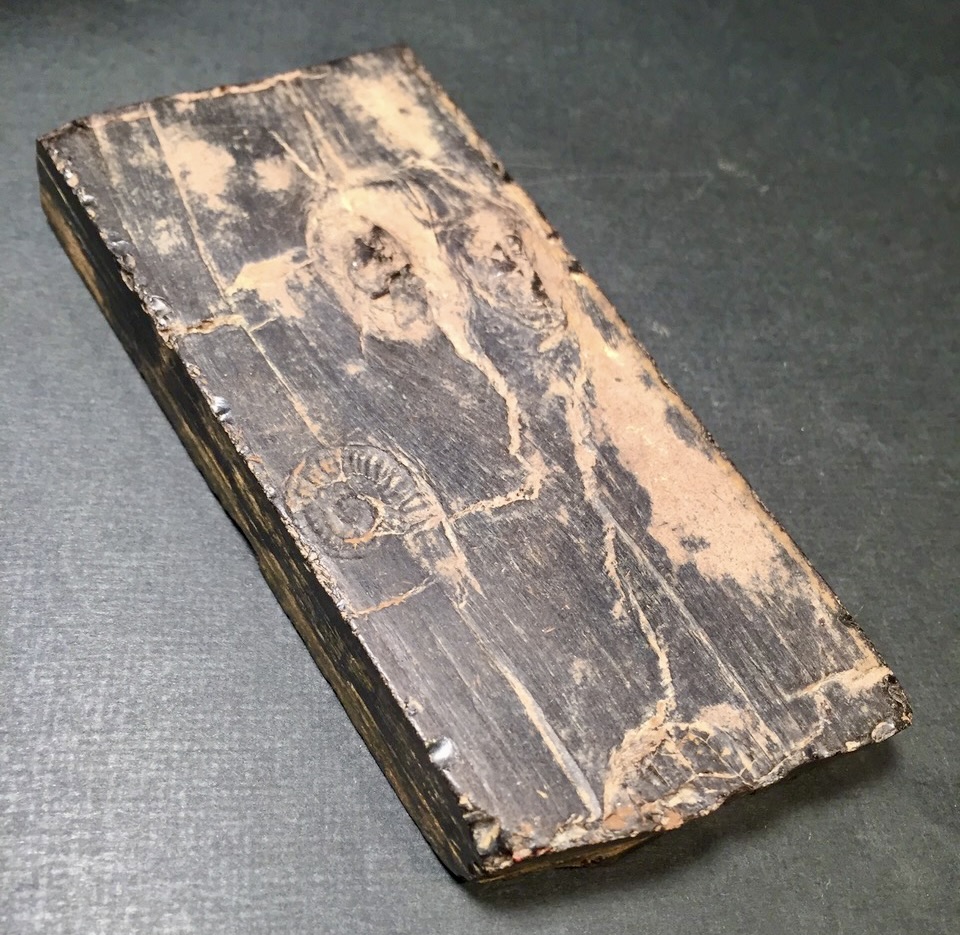The Definition of Whitby Jet
In the British Isles, Whitby jet has been used for decorative purposes since the Neolithic. That’s a very long time. In fact, it’s over 5000 years of history. Yet, much of the information published on the subject is little more than folklore or the result of thousands of years of Chinese whispers. So, if you have ever wondered if Whitby jet comes in colours other than black? Ever postulated whether Whitby jet is just posh coal? Or contemplated the likelihood of a forest of monkey puzzle trees once engulfing the Yorkshire coast, then keep reading for the true definition of Whitby jet.
The purpose of this blog
This blog, curated by me, Sarah Caldwell Steele, is the cumulation of over 40 years of practitioner experience. I have been making jet jewellery since I was a young child. This hands-on maker’s intuition is also grounded in academic research.
As a Fellow of the Gemmological Association of Great Britain, geologist and Whitby jet researcher at Durham University I am the only scientist working exclusively in the field of jet research.
My aim is to classify the whole Jet Group of gemstones in order to better understand and ultimately protect these ancient gem materials and those peoples who work jet as a way of life
I’d love to hear feedback on my blogs and feel free to make suggestions for future articles.
“What is Whitby Jet?”
This is probably the most frequently asked question in Whitby! Jet information available online is often confusing and more often than not, is completely incorrect. For example, the monkey puzzle myth. I shan’t go into that here but you can learn the truth here. Is Whitby Jet Monkey Puzzle wood? When I began researching the subject some 20+ years ago I discovered rather quickly that the term ‘jet’ means quite a different thing to different groups of people.
Geological definition of Whitby jet
If I ask geologists, they will say that it is an unusual fossilisation of wood. A type of coal perhaps? Jet however unlike most coals is not formed from a fossilised peat bog. Rather, it is formed from isolated masses of fossilised driftwood. Jet was first geologically defined by Stach (1928.) as ‘being formed from fossilised wood with a secondary impregnation of bitumen from it’s surrounding sedimentary environment’. That definition is still true for Whitby jet, but the picture is more complex globally. Other jets are made in different ways.

Archaeological definition of jet
Archaeologists often use the generic term ‘jet-like materials’. This is used to describe all black carbonaceous finds in the archaeological record. This includes materials such as oil-shales, cannel coals and bog-oak. Archaeologists are aware of the problem with distinguishing jet from other materials. However, there has been little progress in this field of research. My current PhD research project is essentially designed to understand the geoarchaeology and archaeogemmology of these black materials. It will allow us to reclassify and identify these materials correctly.

Jewellery trade definition of jet
The jewellery trade, especially antique and estate dealers use ‘jet’as a generic term to cover all Victorian mourning jewellery. These include glass, horn, vulcanite, other early plastics such as Galalith, Bakelite and Lucite. Most families have hidden somewhere a collection of black jewellery. It is handed down through the generations and simply termed ‘Granny’s Jet’.

Gemmological definition of Whitby jet
Gemmologically, jet is an organic gemstone in the same class as coral, amber, pearl, ivory and horn. This however is way too simplistic and in my opinion. The group of materials require an overhaul from a descriptive perspective. Jet can also be described as a ‘biogenic’ material but this too is not the full story. I am currently working on a branch of gemmology called “Hydrocarbon Gemmology”. This will better classify the black, opaque members of the organic gemstone group.
The true definition of Whitby jet

Whitby jet is actually fossilised driftwood from the Toarcian Period of the Lower Jurassic. The rocks containing the Whitby jet were deposited 183 million years ago. This was a period of extreme climate change and the resulting conditions led to perfect conditions for the jetonisation of wood. The conditions in the oceans, however, were not so good for animal life. At the beginning of this sequence of deposition the rocks bear witness to the seventh-largest extinction event in the geological record. Many marine creatures such as some ammonite species died out.

How extinction events affected jet preservation
This catastrophic event is known as ‘The Toarcian Oceanic Anoxic Event (TOAE). It is the first period of oceanic anoxia witnessed in the geological record. As a result, the strata containing the jet has been of great interest to the scientific community. Especially as certain areas of our modern oceans are beginning to show the early signs of anoxia. Many of the unique properties of our Whitby jet are as a result of these toxic conditions which promoted bacterial and algal blooms in the bottom waters of the Cleveland Basin. These microorganisms produce byproducts in the form of organic molecules. These impregnated the driftwood during early diagenesis giving us the intensely black, lustrous material we know today as jet.
Is Whitby jet jetonised or petrified?
Unlike most fossilised wood, jet is formed by the ‘jetonisation’ rather than ‘petrification’ of the wood. Jet is therefore preserved as a hydrocarbon rather than replaced by minerals. Some specimens however show jetonisation and certification. We call this variety ‘cored jet’. It is rarely suitable for jewellery manufacture.

Is jet formed by heat and pressure?
It is often quoted that jet is formed due to heat and pressure. This, however, is incorrect as the formation of coals including jet, is hindered by extreme pressure. Jet actually forms due to unusual chemical bonding within the matrix of the material. This lead to an abnormal concentration of hydrogen. Jet also has other qualities which make it unusual from a hydrocarbon perspective. Namely its supreme stability in regards to an oxygen-rich environment. The stability means that we find archaeological finds, made from jet which are still pristine some 5,500 years after they were made.
Is Whitby jet coal?

It is way too simplistic to class Whitby jet as coal, as the formation is completely different from most fuel-grade coals. Whitby jet does, however, share the properties of coals in regard to combustion. Coals, which are generally formed as a result of the fossilisation of a whole forest, contain remains of everything that was living in that community. Coals, therefore, comprise of matter which is animal, vegetable and mineral. Jet, however, is formed only from individual planks of driftwood.
Planks of jet
These pieces although referred to as ‘planks’ range in size from small twigs to whole tree trunks. Likewise, although we jet workers often refer to ‘seams’ of jet, this is not actually true. Jet, unlike commercial fuel-grade coals, does not form in seams but in individual planks distributed over an eight-mile outcrop around Whitby. The intense black colour of jet, its deep lustre, ease of polish, low specific gravity and triboelectric properties have led to it being used as a decorative product for 5,500 years. Often, it is believed for apotropaic and magical purposes. Discover more about Magic and Whitby Jet.

What on earth is Whitby jet – In summary
Whitby jet is a wonderful and ancient gemstone. If you’d like to learn more, read on through other blogs on the site. To purchase handmade genuine Whitby jet jewellery made by me in our historic Whitby jet workshop in the heart of Whitby’s Historic Eastside head to The Ebor Jetworks







